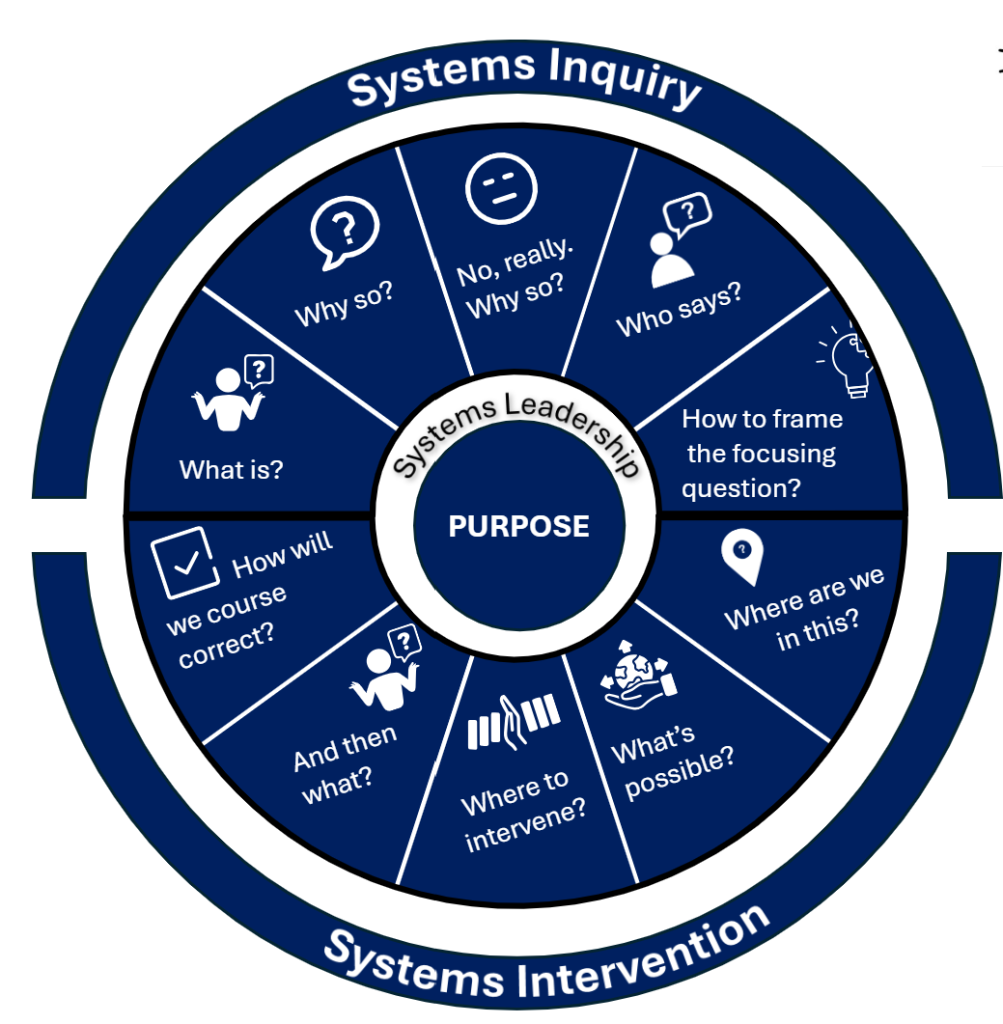4 The Systemcraft Frame
In the Introduction, I made the case for improving the accessibility of systems thinking. The steep learning curve required to understand and apply major systems frameworks like Critical Systems Practice and Systems Dynamics often discourages those who would benefit most from engaging with them. The Systemcraft frame (Joyner, 2025) was developed as an accessible portal into the rich insights from these theories.

Why Systemcraft? Accessibility with Flexibility
Systemcraft is modest in its intentions. It does not aim to reinvent or extend systems thinking theory. Instead, it seeks to reframe and synthesise to enhance comprehension and application, shared understanding and agency. It respects the richness of the field while making it easier to navigate. The framework’s use of Plain English questions invites immediate application. More complex paradigmatic and epistemological considerations come later, once the foundational principles are understood.
The framework is built around two main cycles: Systems Inquiry and Systems Intervention. Each segment poses key questions in Plain English, such as “Why so?” “How to frame the focusing question?” and “Where to intervene?” These serve as essential prompts for working through any complex problem. Beneath each question lie traditional systems thinking tools, such as the Iceberg Model, Cynefin,(Snowden, 2002), Soft Systems Methodology, causal loop diagrams, and leverage point analysis. These will be explored in future chapters.
Systemcraft is designed to be flexible, allowing it to adapt to any stage of problem-solving or decision-making. As Jackson (2024) notes, “no system is ever the same.” Therefore, a framework must be adaptable and flow with the problem space. While some may benefit from starting at “What is?” and methodically working their way to “How will we course correct?” Systemcraft allows practitioners to enter the process at any point. For instance, if an organisation is already mid-way through a complex intervention, they can start with “How will we course correct?” without needing to go back and revisit previous steps. It’s a fluid, non-linear approach, designed for the networked environments where complex problems tend to reside, and where systems thinking is particularly effective.
In the next chapters we’ll unpack each element in the frame, along with the systems thinking tools and principles that give each question depth and practical value.
References
- Jackson, M. C. (2024). Critical systems thinking: a practitioner’s guide. John Wiley & Sons.
- Joyner, K. (2025) Systems thinking for leaders. A practical guide to engaging with complex problems. Queensland University of Technology. https://qut.pressbooks.pub/systemcraft-systems-thinking/
- Snowden, D. J. (2002). Complex acts of knowing: Paradox and descriptive self‐awareness. Journal of Knowledge Management, 6(2), 100-111.

